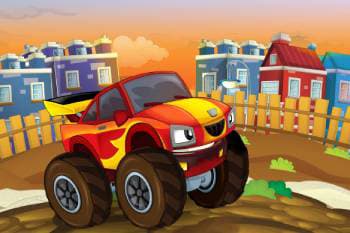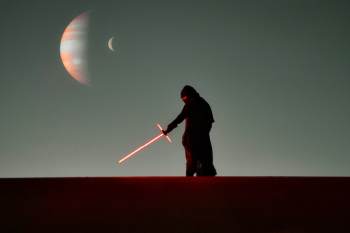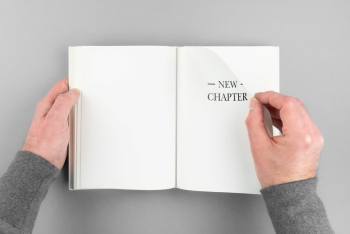5 Reasons Why the Lord of the Rings Books Are So Good
First published in 1954, The Lord of the Rings (LOTR) is a trilogy written by J.R.R Tolkien and serves as a sequel to The Hobbit. The books received critical acclaim in the literary world and became even more popular with their film adaptations. But why do so many people love LOTR – what makes it so good?
TheLord of the Rings books are so good and often praised as modern fantasy masterpieces because of their rich and detailed world-building plot, paired with complex yet relatable characters. The story also deals with universal themes, like good vs. evil, and has roots in real-world mythology.
This article will discuss the reasons behind the excellence of the Lord of the Rings books. It will help you to have a thorough understanding of why it’s considered a modern-day classic in the fantasy genre. In case you haven’t read the books or watched the movies, I’ll try to keep the spoilers to a minimum.

1. Rich and Detailed World-Building
The Lord of the Rings is a masterpiece in fantasy novels and a masterclass for writers wanting to learn world-building, too. One of the biggest appeals of the books is that it creates a highly inspired, fleshed-out fantasy world that makes people believe it exists and become immersed in it.
Here’s a quick look at the key factors that make Middle-earth (the fictional setting in the series) such a captivating fantasy landscape:
- A vast history that shapes the present
- Tons of different races with unique languages and culture
- A myriad of fantastical creatures
I’ve shared a brief overview of these points in the following sections.
A Vast History That Shapes the Present
LOTR drops readers into the “present” state of Middle-earth, where events from the “past” come back to haunt the present dwellers and threaten their time of peace.
A long time ago, Middle-earth was under the control of the evil tyrant – Sauron. In retaliation, and as a last stand, the Elves, Men, and Dwarves combined forces and waged ‘The War of the Last Alliance’ against the great evil and eventually emerged victorious.
We learn more and more about this great war and how it affected Middle-earth’s political and cultural landscape through various character interactions at the present time in the story.
This great war, how and why it happened, and how it has shaped the present are marvelously represented in LOTR, making the world more immersive and captivating.
Tons of Different Races With Unique Languages and Cultures
Like all fantasy fiction, LOTR has its fair share of different races with unique physical features and overarching character traits.
For example, the race of Elves in the story is portrayed as ancient beings with access to magical capabilities and a deep connection to nature.
On the other hand, we have the Dwarves, characterized by pride and perseverance. They are the great craftspeople of the land.
And then there are Hobbits, a race of small, peaceful, and rustic dwellers of Middle-earth.
Apart from setting up these different races, J.R.R. Tolkien decided to outperform and add unique customs, belief systems, traditions, and even languages for each race. The amount of care and attention he took gave the world of Middle-earth an applaudable realism and immersion.
A Myriad of Fantastical Creatures
Middle-earth is riddled with tons of fantasy creatures like:
- Giant eagles
- Massive spiders
- Huge talking (slowly, for sure) trees
- Talking dragons
However, LOTR marvelously weaves these creatures into the overall narrative. They are a part of the history and culture of Middle-earth and not just there in the story for the sake of being “fantastical.”
In fact, all these creatures play a huge role in moving the story forward without appearing out of nowhere like a deus ex machina.
2. Complex, Relatable, and Intriguing Characters
If not for the fantastic lore and world-building, the next best thing LOTR has going for it is the plethora of intriguing, relatable, and complex characters.
One of the amazing things about LOTR is that J.R.R. Tolkien not only managed to provide his readers with a realized protagonist, but all the side characters are also amplified with distinct strengths, weaknesses, and motivations.
Here’s a brief overview of the personal journeys of some of the popular characters without going too much into spoilers.
Frodo Baggins
For decades, readers have been enthralled by the story of Frodo Baggins and his epic quest to destroy the magical Ring and save Middle-earth from the evil Sauron.
Frodo Baggins, the story’s protagonist and a hobbit by race, is characterized by his weak physicality but pure heart. He is responsible for journeying through Middle-earth lands and destroying the One Ring, which will ruin Sauron once and for all.
However, tasked with this daunting responsibility, Frodo is plagued by continuous life threats, self-doubt, fear, and the burden of bearing the Ring. Anyone can sympathize with his internal struggles; some might find them relatable. But seeing how Frodo overcomes all of it makes the character commendable.
Gollum
Gollum is a fan-favorite character – a precious one, if you will – and used to explore what Frodo might become if he loses his will to the malice of the One Ring.
Once known as Smeagol, Gollum was a hobbit just like Frodo until he stumbled onto the One Ring. But, later, The Ring corrupted Smeagol and turned him into a twisted creature who goes by the name of Gollum.
In the present, Gollum is consumed by his obsession with the Ring. However, there are still some signs of compassion, remorse, and humanity left within him, which makes the character’s fate all the more tragic.
Boromir
Boromir is a human marked by his pride and his masterful skills in battle. At first, Boromir becomes corrupted under the spell of the One Ring and wants to snatch it from Frodo. He even tries to assault Frodo and take the Ring for himself but fails.
Later Boromir understands what he did was wrong, acknowledges the corruption of the Ring, and eventually redeems himself in front of his comrades.
He is a complex character that, on one part, is used as a plot device to help readers understand how the Ring corrupts. However, at a much deeper level, he shows how we all can make hideous mistakes in our lives, but that doesn’t make us bad people, and we always have a chance to redeem ourselves.
Gandalf
And lastly, we have Gandalf, possibly one of the most beloved wise old wizards in all of fantasy literature.
At the start of the LOTR story, he is known as Gandalf the Grey – a kind, compassionate, and wise wizard functioning as a mentor to the main characters.
Later down the line, he is transformed into Gandalf the White, a wizard far more powerful and mysterious than his former self. The transformed or transcended wizard serves as a symbol of hope and inspiration not only to our heroes but also to the readers.
His wisdom and powerful speeches are not only inspiring inside the story but also outside it.
3. Includes Several Universal Themes
Another thing that makes LOTR such an incredible book series is its exploration of universal themes, making it easily accessible to all types of readers.
Here are some of the major themes explored in the books:
- Good vs. Evil
- The power of friendship
- Leadership and heroism
- Love
- Tragedy
At its core, LOTR is a timeless classic revolving around the concept of good vs. evil. What is good, what is evil, and how can good defeat evil?
Sauron is obviously the “evil” character in the book, and the One Ring is its agent. The Ring evokes malicious thoughts in the minds of ordinary people near it. Most people will succumb to this temptation and thereby become victims of evil forces.
However, resisting this temptation, and doing what is right, will help the characters defeat this evil and let goodness triumph.
But how can ordinary people fight this temptation?
Here we see the second theme explored in the books – the power of friendship.
No one can defeat Sauron alone. But through teamwork and trusting their companions, the heroes are finally able to remove Sauron’s stronghold from Middle-earth.
Other than this, LOTR also explores heroism and leadership through the human characters, most notably Aragorn. He is a steadfast character who knows his duty and purpose and is completely committed to it.
At the start of the story, Aragorn is depicted as the rightful heir to his kingdom. Throughout the story, we see how each of his dutiful heroic actions leads to the people accepting him as their king.
There’s also a small little love story in the books between Faramir and Eowyn, which gets nods of approval from readers looking for some romance in their stories. Though it’s pretty brief, it’s undeniably adorable and completely justified story-wise.
And lastly, we have a classic tragedy with the character of Gollum. At first glance, it appears that he is irredeemably corrupted by the One Ring, but later we learn there’s still a little bit of humanity left within him, which is just overpowered by the Ring.
So as you can see, LOTR juggles a lot of universally appealing themes, thereby making it accessible to a wide range of audiences.
4. Influenced by Real-World Mythology
In case you didn’t know, J.R.R. Tolkien was a professor of Anglo-Saxon literature at Oxford and an expert on Old Norse literature and language.
Therefore, when crafting the LOTR story, he took all of his knowledge and weaved together compelling lore based on real-world mythos, making the characters and settings feel very familiar and sometimes historical rather than fantastical.
Here are a few examples of how Tolkien leaned on real-world myths to create his characters:
- The Rings of Power, in concept, is very much influenced by the Norse legend of Der Ring des Nibelungen.
- Gandalf, specifically his angel incarnate, is similar to the “wanderer” guise of the Norse god Odin.
- The Gollum name most likely has its roots in the Old Norse word ‘Gull‘ or Goll, which means Gold. This is befitting, especially considering Gollum’s compulsion for a certain piece of jewelry.
- Tom Bombadil is arguably based on the Celtic figure – the Green Man. He is known as the guardian of the natural world.
- In a similar manner, Tom Bombadil’s wife, Goldberry, is most likely based on the Celtic River Goddess.
- And finally, the protagonist – Frodo, is a character who mirrors the qualities of Christ. The manner in which he willingly takes the burden of the Ring and volunteers to sacrifice himself for the safety of his friends, his people, and all of Middle-earth are very Christ-like.
5. The Books Are Very Well Written
Given the facts established in the already discussed points, LOTR offers incredible world-building, is backed by various astounding characters, explores universally appealing themes, and is based on real-world mythology.
In concept, a fantasy series that offers all of this sounds appealing, but most writers will not be able to pull it off and might end up delivering a mess that isn’t good at any of the things mentioned earlier.
Fortunately, J.R.R. Tolkien isn’t “most writers,” but quite the opposite. He is a legend who managed to pull off the impossible by taking all these elements and weaving together a seamless story.
The books consist of three parts: The Fellowship of the Ring, The Two Towers, and The Return of the King. From its captivating story to its unique characters, Tolkien created an immersive world in this trilogy that draws readers in and keeps them enthralled for days.
While reading LOTR, you won’t find that the characters are trailing the plot or the plot trailing the characters. On the flip side, everything follows a streamlined narrative that’s properly balanced and feels natural. This goes to show J.R.R. Tolkien’s absolute mastery over his craft.
However, it’s also commendable that Tolkien poured a lot of work and effort into developing LOTR, a project that lasted nearly two decades.
The idea for LOTR started after the publication of The Hobbit in 1937. While The Hobbit was a fantasy novel intended for children, Tolkien wanted to create a fantasy novel for adults and thus began work on LOTR.
He created the races with their unique languages, customs, cuisines, detailed maps with diverse landscapes, and much more.
All of his hard work helped breathe life into the world of LOTR, making it impressive and elaborate enough to build towards its literary masterpiece status.
Sources
- Wikipedia: The Lord of the Rings
- Writers Write: The Greatest Fictional World Builders: J.R.R. Tolkien
- Smart Moves Journal IJELLH: J.R.R. Tolkien: Pioneer of World-building
- YouTube: Middle Earth and The Perils of World-building
- Wikipedia: The Hobbit
- R/worldbuilding: What makes Tolkien’s world-building so distinctly effective?
- GQ: An idiot’s guide to the lore in The Lord of the Rings: The Rings of Power
- YouTube: The Characters of LOTR: The Relatable, the Admirable, and the “Warning to Others”
- Wikipedia: Adaptations of The Lord of the Rings
- Literariness: Literary Theory and Criticism – The Lord of the Rings Character Analysis
- Gamerant: The ‘Lord Of The Rings’ Story Sticks With You For One Big Reason
- YouTube: What Writers Should Learn From The Lord Of The Rings
- Medievalists.net: The Riddle of Gollum: Was Tolkien Inspired by Old Norse Gold, the Jewish Golem, and the Christian Gospel?
- Bartleby: The Theme Of Friendship In Tolkien’s ‘Lord Of The Rings’
- Wikipedia: Themes of The Lord of the Rings
- CNN – Discover universal themes in the ‘Lord of the Rings’ – December 18, 2001
- Tor.com: 8 SFF Characters that Embody the Green Man
- Amazon: Everything you need to know about ‘The Lord of the Rings: The Rings of Power’
- Cinema Blend: Why Tolkien’s Work Is Timeless, According To The New Movie’s Cast
- Keith Mathison: Reflections on truth, goodness, and beauty – Light in dark places – Good and Evil in the Lord of the Rings
- Pacific University Common Knowledge: Frodo Baggins: The Modern Parallel to Christ in Literature
- Wikipedia: J. R. R. Tolkien’s influences
- The Irish Central: The undeniable Irish influence on The Lord of the Rings
- Medium – Nitin Bharadwaj: What Makes Lord of the Rings So Good
- Epic Stream: Why The Lord Of The Rings Is The Best Book Ever
- Medium – Karin A. R. Taglang: What You Need to Know Before Reading The Lord of the Rings
- Books Of Brilliance: Lord of the Rings Trilogy: Book Review





